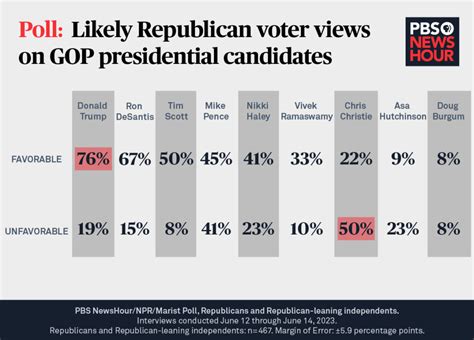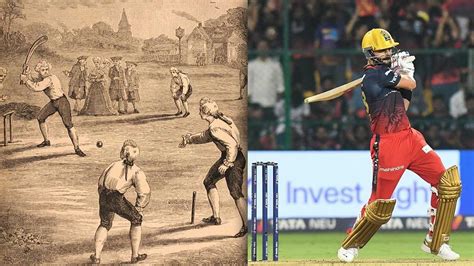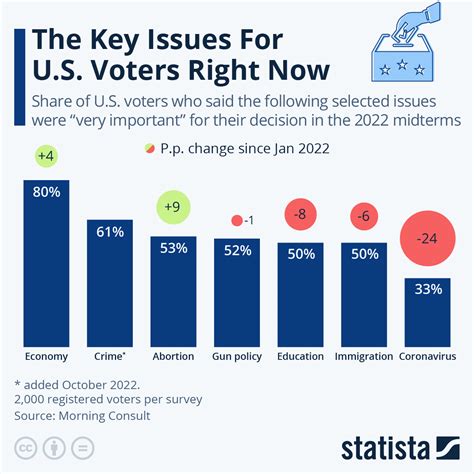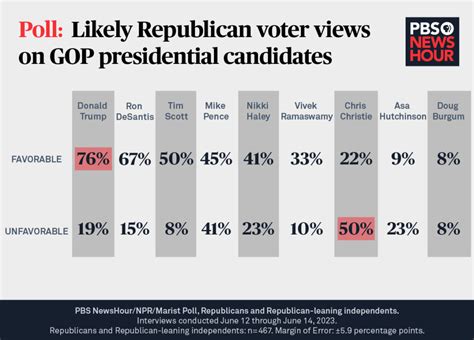Explore key factors influencing voter opinions, methodologies in presidential surveys, and demographic impacts to interpret poll data and predict election outcomes.In today’s fast-paced political landscape, understanding the nuances of presidential polls is crucial for voters, analysts, and policymakers alike. Analyzing The Latest Presidential Polls offers an insightful exploration into the methodologies behind the numbers and the factors that shape voter preferences. By delving deep into the intricacies of polling techniques, key demographic influences, and historical trends, we aim to provide a comprehensive analysis that empowers readers to decode the significance of poll data. Whether you’re a curious voter eager to grasp the shifting tides of public opinion or an academic seeking to understand electoral dynamics, this article promises to illuminate the multifaceted world of presidential polling and its potential implications on upcoming elections. Join us as we navigate through the latest insights and predictions that could shape the future of our nation’s leadership.
Understanding Poll Methodologies Used In Presidential Surveys
When it comes to analyzing the latest presidential polls, the methodologies employed play a crucial role in the accuracy and reliability of the results. Different polling organizations utilize various techniques to gather data, and understanding these methodologies is essential for interpreting the findings effectively.
One common method is the telephone survey, where pollsters call a random sample of voters to ask their opinions. This approach can produce robust results, but it also faces challenges such as declining response rates and the increasing prevalence of mobile phones.
Another popular technique is online polling, which leverages the speed and accessibility of the internet. While this method can efficiently gather large amounts of data, it can be biased towards certain demographics, especially those who are more technologically savvy.
In addition to data collection methods, the sample size and demographics of the respondents are critical factors in determining the credibility of poll results. A well-designed poll typically features a balanced representation across age, gender, ethnicity, and geography. Pollsters often weight the data to account for any disparities, ensuring a more accurate reflection of the voting population.
Furthermore, the timing of polls can significantly affect their outcomes. Polls conducted closer to an election may capture last-minute changes in public opinion, while those taken earlier may not reflect the most current sentiments. This temporal factor is essential for analyzing the dynamics of voter preferences as they evolve over time.
To gain a deeper understanding of the methodologies used in presidential surveys, it is recommended to consider the organization behind the poll, their specific techniques, and how their results compare with others in the field. By doing so, voters and analysts can better navigate the complex landscape of political polling.
Key Factors Influencing Voter Opinions In Recent Polls
When analyzing the latest presidential polls, it is crucial to recognize the various factors that influence voter opinions. Several elements play a significant role in shaping public sentiment and can ultimately impact election outcomes. Below are some of the key factors:
- Economic Conditions: The state of the economy is often one of the most prominent influences on voter sentiment. Factors such as unemployment rates, inflation, and overall economic growth can sway voters toward or against candidates.
- Social Issues: Issues like healthcare, immigration, and civil rights resonate strongly with voters. How candidates position themselves on these topics can significantly affect their popularity.
- Media Coverage: The way media portrays candidates plays a critical role in shaping public opinions. Positive or negative press can alter perceptions rapidly.
- Candidate Image: The personal characteristics of candidates, including their charisma, integrity, and relatability, can influence voters’ decisions significantly.
- Party Identification: Voters tend to lean towards candidates who represent their party affiliations. Loyalty to party ideals can supersede specific policy preferences.
- Current Events: National and global events often influence voter opinions. For instance, crises or significant policy changes can shift public perception overnight.
Understanding these factors is essential for analyzing the current landscape of presidential voter sentiment, as they form the backdrop against which polls are conducted and interpreted.
| Factor | Influence on Voter Opinion |
|---|---|
| Economic Conditions | Can sway votes towards more fiscally responsible candidates. |
| Social Issues | Determines alignment with candidates based on values and beliefs. |
| Media Coverage | Shapes public perception through portrayal of candidates. |
| Candidate Image | Affects relatability and likability in the eyes of voters. |
| Party Identification | Guides voter loyalty and candidate support. |
| Current Events | Can rapidly alter the political landscape. |
Analyzing The Impact Of Demographics On Poll Results
The impact of demographics on polling outcomes is a critical area of focus in understanding voter preferences and behaviors. Different demographic factors such as age, gender, race, and education level can significantly influence how individuals respond to survey questions and ultimately their voting choices.
For instance, younger voters may prioritize issues like climate change and student debt, which might not resonate as strongly with older voters who may focus more on healthcare or social security. Similarly, gender differences can play a role, as women may have different concerns than men, affecting their choice of candidates.
When analyzing the polling data, it’s essential to consider how these demographic groups are represented in survey samples. A sample that underrepresents certain groups may lead to skewed results, making it crucial for pollsters to ensure their samples accurately reflect the voter population. By segmenting poll results by demographic categories, analysts can gain deeper insights into the preferences of various voter segments.
Furthermore, historical data shows that demographic shifts can alter the political landscape dramatically from one election cycle to another. For example, increasing diversity in the population can lead to changing political priorities and voting patterns. As such, keeping an eye on these demographic trends is vital for accurate predictions in presidential elections.
analyzing the demographic influences on poll results provides a more nuanced understanding of voter behavior and can help to identify potential shifts in the political landscape. This analysis is essential for political campaigns and strategists seeking to tailor their messaging and outreach to specific voter segments.
Comparing Historical Trends To Current Presidential Polls
When analyzing the results of current presidential polls, it is vital to place them in the context of historical trends. Historical data can provide a framework for understanding how voter sentiments have evolved over time and how they may influence upcoming elections.
In the past few decades, several patterns have emerged in presidential polling that can serve as key indicators for current trends:
| Election Year | Polling Method | Key Issues | Outcome |
|---|---|---|---|
| 2000 | Telephone Surveys | Economy, Education | Very Close Election |
| 2004 | Online and Telephone Combination | Iraq War, Economy | Clear Victory |
| 2008 | Increased Internet Polling | Economic Crisis, Change | Significant Win |
| 2016 | Mix of Phone and Online Polls | Immigration, Nationalism | Surprising Outcome |
| 2020 | Predominantly Online Polls | COVID-19, Racial Justice | Predictable Outcome |
The above table summarizes some historical elections, showcasing how various polling methods and key issues have shaped voter behavior. Notably, shifts towards online polling have become more prevalent, especially with the impact of technology on data collection and voter engagement.
Another layer of this analysis is understanding how public opinion shifts in the context of current events compared to past elections. For instance, events such as economic downturns, social movements, or health crises can pivot public sentiment significantly, paralleling trends observed in historical data.
Comparing current polls to those of previous elections allows researchers and analysts to identify whether contemporary polling data reflects a continuing trend or if it indicates a potential disruption in voting patterns that could alter the expected outcomes of future elections.
Interpreting Poll Data To Predict Election Outcomes
When analyzing the results of presidential polls, it’s crucial to understand how to interpret the data effectively. Polls are snapshots of public opinion at a specific moment in time, but they can offer valuable insights into potential election outcomes when examined closely. Here are several key considerations to keep in mind:
- Margin of Error: Every poll comes with a margin of error, indicating the degree of uncertainty in the results. Understanding this statistic helps gauge how reliable the data is and how much variation may occur in actual election outcomes.
- Sample Size: Larger sample sizes generally yield more accurate reflections of public opinion. It’s essential to examine whether the survey’s sample size is sufficient to represent the broader population effectively.
- Timing of the Poll: The context in which a poll is conducted can affect its results. For instance, if a poll is taken shortly after a major political event, it may reflect a temporary shift in public sentiment rather than a lasting trend.
- Question Wording: The way questions are phrased can significantly influence responses. Neutral wording is crucial in preventing bias, which can skew the interpretation of how strongly people feel about candidates or policies.
- Trends Over Time: Assessing changes in polling data over time is just as important as looking at a single snapshot. Consistent upward or downward trends can be indicators of shifting voter sentiments leading to the election.
Additionally, it’s beneficial to compare data across various polls rather than relying on a singular source. Different organizations may employ various methodologies, and understanding how these differences affect results can provide deeper insights. Lastly, consider the undecided voters; the decision made by this demographic could potentially sway the election in unforeseen ways, making it a critical area to monitor as Election Day approaches.
Frequently Asked Questions
What are presidential polls?
Presidential polls are surveys conducted to gauge the preferences and opinions of voters regarding candidates running for the presidency.
How often are presidential polls conducted?
Presidential polls are typically conducted regularly in the lead-up to an election, often on a monthly or weekly basis, depending on the polling organization.
What factors can influence presidential poll results?
Factors such as economic conditions, social issues, candidate debates, major news events, and public perception can greatly influence the results of presidential polls.
How do polling organizations ensure accuracy?
Polling organizations use scientific methods such as random sampling, stratification, and margin of error calculations to ensure that their results are as accurate and representative of the population as possible.
What is the margin of error in polling, and why is it important?
The margin of error is a statistic that expresses the amount of random sampling error in the survey’s results. It is important because it provides insight into the potential variability of the poll’s findings.
How should readers interpret fluctuating poll numbers?
Readers should interpret fluctuating poll numbers with caution, understanding that they can change over time and are subject to various external influences. Trends are generally more significant than individual results.
What role do presidential polls play in the election process?
Presidential polls play a significant role by informing candidates’ campaign strategies, helping voters make informed decisions, and shaping the media narrative surrounding the election.









